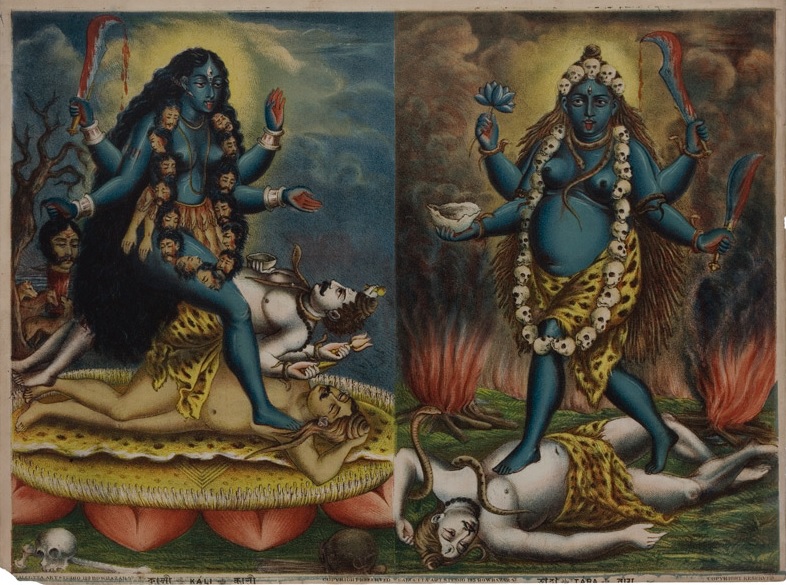|
Bījamantra
A bījamantra (, in modern schwa-deleted Indo-Aryan languages: beej mantra), or a ''bījākṣara'' ("seed-syllable"), is a monosyllabic mantra believed to contain the essence of a given deity. They are found in Tantric Hinduism and in Esoteric Buddhism (Vajrayana / Mantrayana). A bījamantra is ritually uttered for the invocation of a deity. It is considered the true name of the deity as well as a manifestation of the deity in sonic form. It is also found in religious art, often standing for a specific deity. A bījamantra can be regarded to be a mystic sound made of the first few characters of a given deity's name, the chanting of which is regarded to allow an adherent to achieve a state of spiritual sanctity. These mantras are also associated with the chakras of the body. The Romanian scholar Mircea Eliade stated that an adherent who chants the semantically meaningless bījamantra "appropriates its ontological essence, concretely and directly assimilates with the god". ... [...More Info...] [...Related Items...] OR: [Wikipedia] [Google] [Baidu] |
Mantra
A mantra ( ; Pali: ''mantra'') or mantram (Devanagari: मन्त्रम्) is a sacred utterance, a numinous sound, a syllable, word or phonemes, or group of words (most often in an Indo-Iranian language like Sanskrit or Avestan) believed by practitioners to have religious, magical or spiritual powers. Feuerstein, Georg (2003), ''The Deeper Dimension of Yoga''. Shambala Publications, Boston, MA Some mantras have a syntactic structure and a literal meaning, while others do not. ꣽ, ॐ (Aum, Om) serves as an important mantra in various Indian religions. Specifically, it is an example of a seed syllable mantra ( bijamantra). It is believed to be the first sound in Hinduism and as the sonic essence of the absolute divine reality. Longer mantras are phrases with several syllables, names and words. These phrases may have spiritual interpretations such as a name of a deity, a longing for truth, reality, light, immortality, peace, love, knowledge, and action. Examples of lo ... [...More Info...] [...Related Items...] OR: [Wikipedia] [Google] [Baidu] |
Schwa Deletion In Indo-Aryan Languages
Schwa deletion, or schwa syncope, is a phenomenon that sometimes occurs in Assamese, Hindi, Urdu, Bengali, Kashmiri, Punjabi, Gujarati, and several other Indo-Aryan languages with schwas that are implicit in their written scripts. Languages like Marathi and Maithili with increased influence from other languages through coming into contact with them—also show a similar phenomenon. Some schwas are obligatorily deleted in pronunciation even if the script suggests otherwise. Here, ''schwa'' refers to an inherent vowel in the respective abugida scripts, not necessarily pronounced as schwa ( mid central vowel). Schwa deletion is important for intelligibility and unaccented speech. It also presents a challenge to non-native speakers and speech synthesis software because the scripts, including Devanagari, do not indicate when schwas should be deleted. For example, the Sanskrit word " Rāma" (, राम) is pronounced "Rām" (, राम्) in Hindi. The schwa ( ə) sound ... [...More Info...] [...Related Items...] OR: [Wikipedia] [Google] [Baidu] |
Shiva
Shiva (; , ), also known as Mahadeva (; , , Help:IPA/Sanskrit, [mɐɦaːd̪eːʋɐh]) and Hara, is one of the Hindu deities, principal deities of Hinduism. He is the God in Hinduism, Supreme Being in Shaivism, one of the major traditions within Hinduism. Shiva is known as ''The Destroyer'' within the Trimurti, the Hinduism, Hindu trinity which also includes Brahma and Vishnu. In the Shaivite tradition, Shiva is the Supreme Lord who creates, protects and transforms the universe. In the goddess-oriented Shaktism, Shakta tradition, the Supreme Goddess (Devi) is regarded as the energy and creative power (Shakti) and the equal complementary partner of Shiva. Shiva is one of the five equivalent deities in Panchayatana puja of the Smarta Tradition, Smarta tradition of Hinduism. Shiva has many aspects, benevolent as well as fearsome. In benevolent aspects, he is depicted as an Omniscience, omniscient yogi who lives an Asceticism#Hinduism, ascetic life on Kailasa as well as a house ... [...More Info...] [...Related Items...] OR: [Wikipedia] [Google] [Baidu] |
Tara (Mahavidya)
In the Shaivism and Shaktism tradition of Hinduism, the goddess Tara (, ) is the second of the ten Mahavidyas. She is considered a form of Adishakti, the Tantra, tantric manifestation of Parvati. Her three most famous forms are Ekajaṭā, Ugratara, and Nīlasarasvatī (also spelled Neelasaraswati, Neela Saraswati, or Neelsaraswati). Her most famous centre of worship is the temple and the cremation ground of Tarapith in West Bengal, India. Legends The commonly known origin of Tara is from the 17th chapter of the ''Rudrayamala, Rudrayāmala'' which describes the initial unsuccessful attempts of the sage Vasishtha, Vasiṣṭha in worshipping Tara, and the subsequent meeting with the god Vishnu in the form of The Buddha in Hinduism, Buddha in the region called Mahācīna (Tibet) and his eventual success by the means of ''Kaula (Hinduism), kaula'' rites. She is also described as the form of the ''Atharvaveda''. Her Bhairava is named Akṣobhya. According to the ''Svatantratantr ... [...More Info...] [...Related Items...] OR: [Wikipedia] [Google] [Baidu] |


